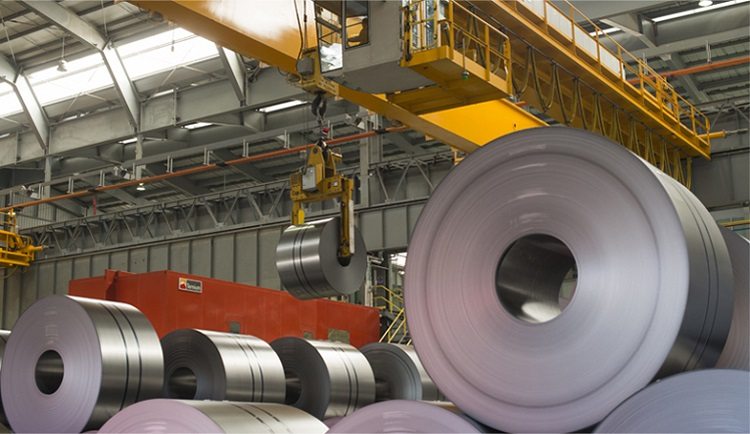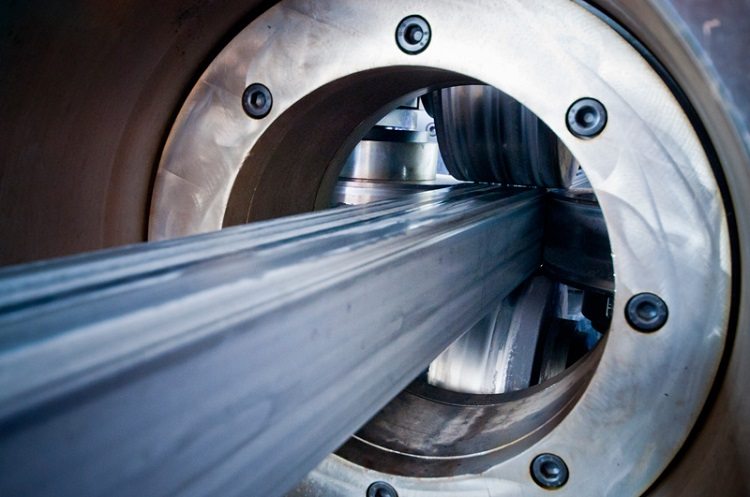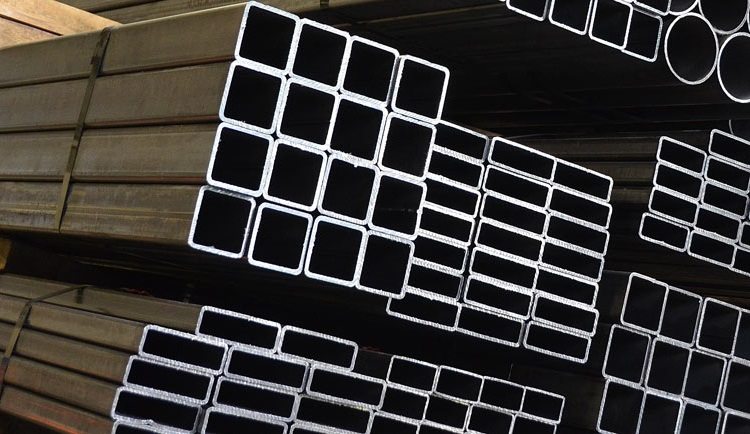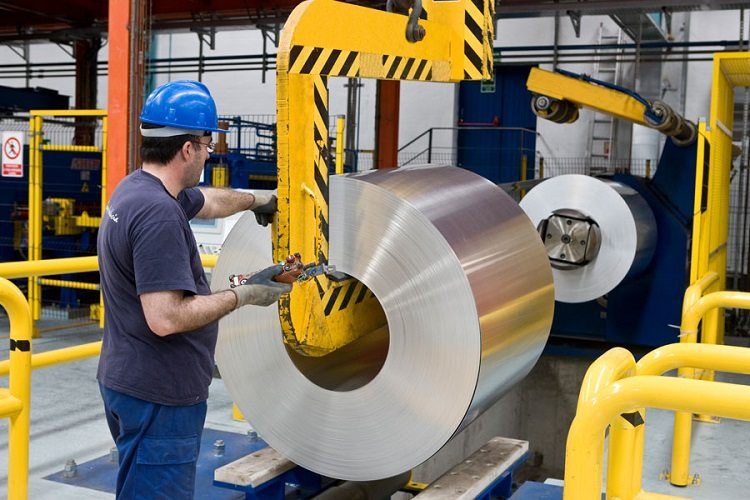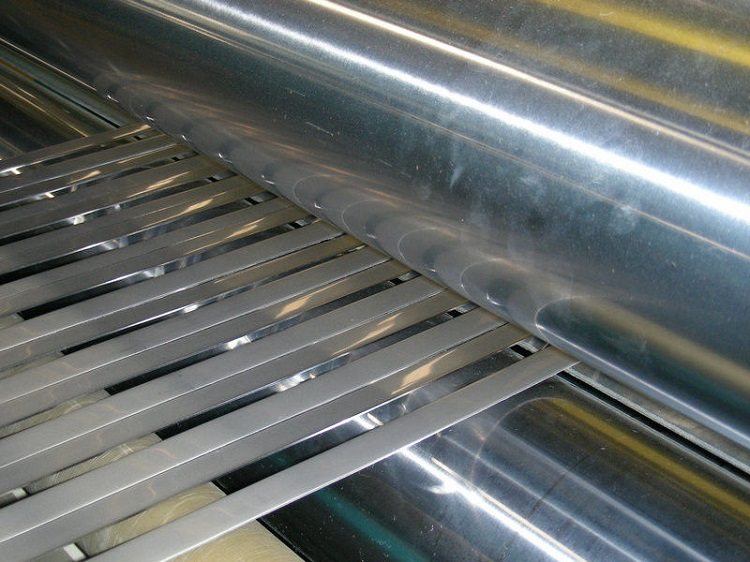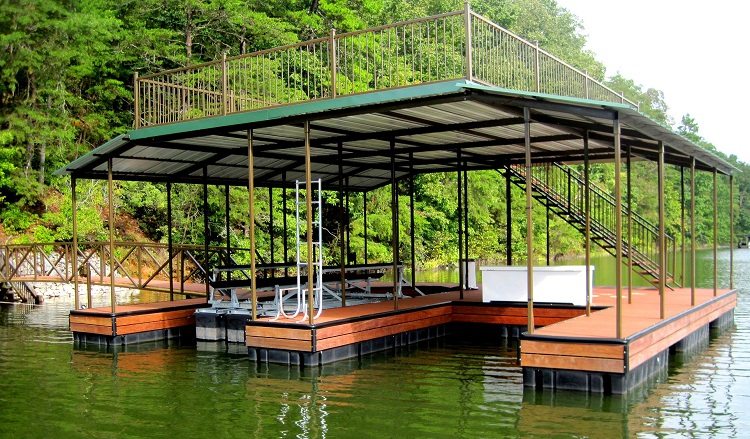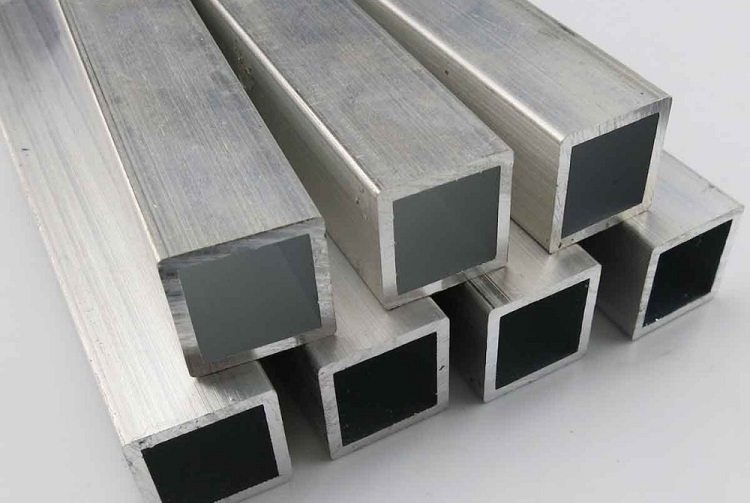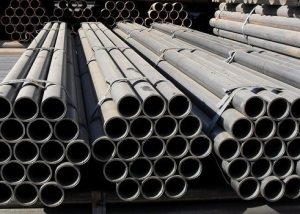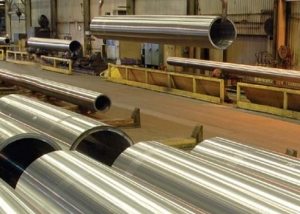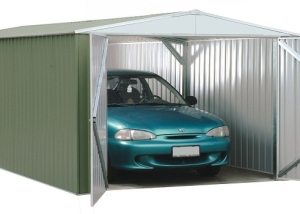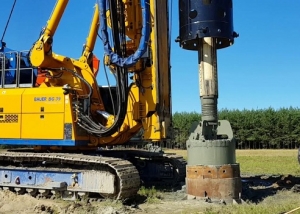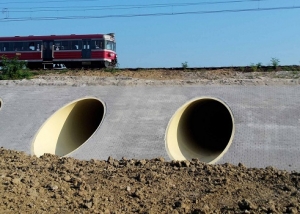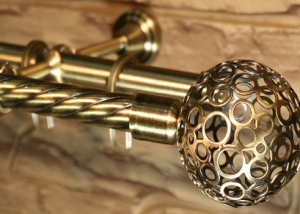Profile square and rectangular pipes occupy a rather large niche in the global metal rolling market. Without their use, it is impossible to imagine modern construction. The design created on the basis of such products, thanks to the stiffness of those ribs, can withstand very high loads. But only under one condition: the production process of a profile pipe must comply with the requirements of the relevant GOST.
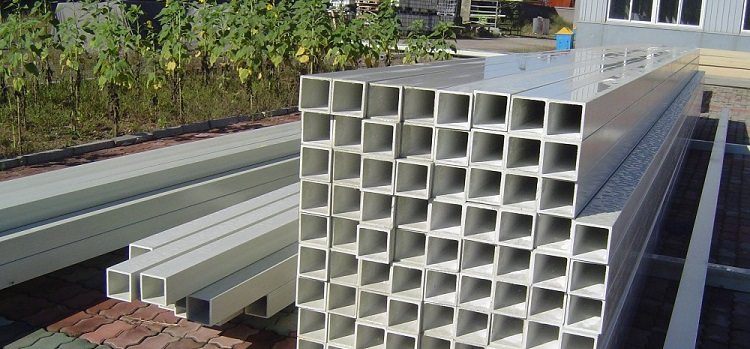
Profile pipes - this is one of the most popular materials for the construction and installation of structures for various purposes
Content
Production of specialized products
GOST 8639-82 says that, depending on the manufacturing technology, a profile pipe can be of the following types:
- electric welded;
- cold-deformed electric welded;
- seamless cold-deformed steel;
- hot-deformed steel seamless.
Consider the process of production of these products in more detail.
Electric-welded pipe. Most of the profile products manufactured today are of this type. Their production includes the following steps:
- the manufacturer receives sheet steel in the form of coils. They are unwound and subjected to slitting;
- the narrow long strips thus obtained are welded into an endless ribbon wound onto a storage drum. This ensures the continuity of production;
- then the tape is unwound and fed to the rollers, which, bending the workpiece, give it a tubular shape with open seams;
- then the seams are welded.
- a square or rectangular billet profile is formed on the next rollers after it is cooled;
- Further, the procedure of non-destructive testing of eddy currents by the weld quality is performed. The basis of this method is the dependence of the electrical conductivity of the pipe on the foreign inclusions, cracks, shells, and other defects present in its body;
- after that the pipe is heat treated. It consists in heating the product above the recrystallization point with subsequent natural cooling. In this way, the internal stresses in the metal that appear during deformation in the rollers are removed;
- the pipe is cut into segments of a given length;
- subjected to visual inspection. The necessity of this stage is caused by the fact that no deviations will show any deviations or wear of one of the rollers on the flaw detector, but in appearance they will transfer the pipe to the category of substandard products. The requirement for the assortment of steel profile pipes GOST 8639-82 is very stringent: they must have the correct geometry;
- having successfully completed all these stages, the pipes manufactured are sent to the finished goods warehouse (CGP).
Important! The range of electric-welded profile pipes GOST 8639-82 includes products made by various welding methods. The reliability of the seam is quite different. The most durable are pipes that are welded in an argon atmosphere with a tungsten electrode (TIG technology). However, when welding with induction currents (HF technology), the line works with the highest productivity, which reduces the cost of a running meter of pipe.
The pipe is seamless. The difference in production begins already with the shape of the workpiece.Unlike electrowelded technology, here it is round, not flat. The process itself is much more complicated and more expensive.
- a heated round billet (metallurgists call it a bar) is turned into a sleeve on the piercing mill. The mandrel remains inside the manufactured pipe and the next several processing steps;
- Having arrived at a number of rollers, the sleeve on the mandrel is rolled out, its outer diameter decreases, and it itself is elongated and calibrated to the specified dimensions. Her shape remains round.
Depending on the temperature at which such machining is performed, cold and hot deformed pipes are distinguished. Regardless of the type, the assortment of pipes of the profile square GOST 8639-82 is common to all products, while round pipes of cold and hot deformation are made according to different standards.
Seamless pipe acquires a square or rectangular shape already on other rollers. After passing the calibration stage, it, like the electric welded one, is cut, subjected to visual inspection, packaged and sent to the SHP.
The greater mechanical strength of products of this type compared with electrowelded is due not only to the absence of a weak spot - a seam. The reason for this phenomenon lies in the features of cold and hot rolled products. For example, the latter method allows the production of a square pipe with a profile seamless GOST 8639-82 with a wall thickness of up to 75 (!) Mm.
But this only applies to the size of the final product. The fundamental difference between the technologies themselves is that in the production of a cold-deformed pipe with the profile GOST 8639-82, the workpiece, only after leaving the piercing mill, is immediately cooled by water. That is, it goes through all subsequent stages, being cold.
Assortment of pipe profile
A table with the dimensions of the sides of the cross section of profile pipes is attached to the above GOST. Below are the data on the main parameters of the most popular profile pipes.
On a note! The full list of such products is much wider.
Table 1
| Section Dimensions, mm | Meters per ton | Weight 1 meter, kg | Standard size | Wall thickness mm |
| 120×80 | 82 | 12,195 | 6 | 4 |
| 100×100 | 85 | 11,833 | 12 | 4 |
| 100×100 | 115 | 8,69 | -“- | 3 |
| 100×60 | 111 | 9,0 | 6 | 4 |
| 100×60 | 140 | 7,16 | -“- | 3 |
| 100×40 | 162 | 6,16 | 12 | 4 |
| 80×80 | 107 | 9, 33 | -“- | 4 |
| 80×80 | 138 | 7,246 | -“- | 3 |
| 80×60 | 156 | 6,41 | 6,11 | 3 |
| 80×40 | 147 | 6,82 | 12 | 4 |
| 80×40 | 167 | 6,0 | 10 | 3 |
| 80×40 | 253 | 3,96 | 6 | 2 |
| 70×50 | 142 | 7,04 | -“- | 4 |
| 60×60 | 167 | 6,0 | 10,6 | 3 |
| 60×60 | 263 | 3,8 | 6 | 2 |
| 60×40 | 226 | 4,416 | -“- | 3 |
| 60×40 | 364 | 2,745 | -“- | 2 |
| 60×40 | 435 | 2,30 | -“- | 1,5 |
| 60×30 | 370 | 2,70 | -“- | 2 |
| 50×50 | 232 | 4,31 | -“- | 3 |
| 50×50 | 313 | 3,20 | -“- | 2 |
| 50×25 | 316 | 3,16 | 8,7 | 4 |
| 50×25 | 435 | 2,30 | 6 | 2 |
| 50×25 | 588 | 1,70 | -“- | 1,5 |
| 40×40 | 278 | 3,60 | -“- | 4 |
| 40×40 | 286 | 3,50 | -“- | 3 |
| 40×40 | 422 | 2,368 | -“- | 2 |
| 40×40 | 545 | 1,83 | -“- | 1,5 |
| 40×25 | 625 | 1,60 | -“- | 2 |
| 40×20 | 561 | 1,783 | -“- | 2 |
| 40×20 | 720 | 1,39 | -“- | 1,5 |
| 30×20 | 748 | 1,337 | -“- | 2 |
| 25×25 | 704 | 1,42 | -“- | 2 |
| 25×25 | 833 | 1,20 | -“- | 1,5 |
| 20×20 | 810 | 1,234 | -“- | 2 |
| 20×20 | 1091 | 0,917 | -“- | 1,5 |
| 15×15 | 1333 | 0,75 | -“- | 1,5 |
The column “Standard size” of the table shows the length of the products. These data differ depending on the manufacturing technology. In particular, the measured length of welded structures varies in the range of meters, cold-deformed pipes within meters, and hot-deformed products.
If you need a non-standard steel profile pipe, it is best to opt for non-dimensional types. Due to the specifics of production, sizes of hot-deformed pipe products will not change (4 ... 12.5 meters), while the length of the rest can be:
- welded - any length not exceeding 9 meters;
- cold-deformed meters.
Permissible deviations of the dimensions of the profile rectangular pipe GOST 8645 68 depending on the degree of accuracy and manufacturing technology are presented in table No. 2.
table 2
| Parameter | Welded mm | Cold rolled mm | Hot rolled, mm | |||
| Accurate | Normal | Accurate | Normal | Accurate | Normal | |
| Bulge (concavity) | 0,5 | 0,75 | 0,8 | 1 | 1,2 | 1,5 |
| Wall thickness | ±10,0% | ±10,0% | ±10,0% | ±12,50% | ±15,0% | ±15,0% |
| Outdoor characteristics | ±0,25 | ±0,30 | ±0,30 | ±0,40 | ±1,25 | ±1,50 |
It should be noted that the same characteristics should be inherent in a square pipe of profile steel GOST 8639-82.
Pipe Material
Profile rolled metal is mainly produced from low-carbon steel grades. They must comply with the requirements specified in GOST 13663 of 1986. The provisions of this regulatory document say that each grade of metal should be characterized by certain operational parameters.
These are, first of all, such as:
- elongation ranges from 18 to 24 percent;
- temporary tear resistance.
Important! The value of the last parameter depends on the type of steel. But in any case, it should not go beyond a minimum of 35 and a maximum.
These properties are possessed by such steel grades as ST2KP, ST2PS, ST2SP, 10PS and similar to them. In turn, they are, depending on the purpose, divided into:
- category "A". This includes a group of materials with mechanical properties corresponding to GOST 380-88;
- category "B". The properties of the metal from this group are regulated by the requirements of GOST 1050-74. Of such steel, it is recommended to create structures for special purposes.
Operating conditions and technical requirements, in fact, determine the category of products supplied. And since the parameters of the product must correspond to these factors, the optimal choice of manufacturing material is mandatory only after preliminary calculations.
Technical requirements
The production of steel profile pipe GOST 8639-82 should be carried out in accordance with the following requirements:
1. The raw materials supplied in rolls are sheet metal. About steel grades, the conversation went above, but there are some nuances here. It is formulated as follows:
- the thickness of the steel sheet is low alloyed and should be at least 3 mm;
- a sheet of carbon steel for general purposes should have a thickness of 4 mm;
- sheet thickness from high-quality carbon steel grades - 10 and 20 mm. An intermediate value of this parameter is also allowed - 15 mm.
The supply category and steel grade must be present in the order for the purchase of shaped pipes.
2. Regarding the curvature of the products in the horizontal and vertical plane, GOST requires that these characteristics do not exceed 1 mm per 1 linear meter of pipe.
3. There is a requirement for such a parameter as twisting relative to the longitudinal axis. Its value should not be more than 2 mm for the same running meter of the product.
4. The pipes are cut at right angles. However, only those with a perpendicular deviation to the longitudinal axis of which does not take the nominal length beyond the acceptable limits will receive a quality certificate.
5. On the surface of steel profile pipes, GOST does not allow the presence of sunsets, deep scratches, cracks and other defects.
6. At the same time, this normative document allows for lack of penetration of a longitudinal seam. But under the following conditions:
- on one running meter of a pipe non-penetration of a longitudinal seam is allowed, the length of which does not exceed 50 mm.
- the length of a single local lack of penetration should not be more than 20 mm;
7. One of the most important characteristics of pipe products is the level of temporary tensile strength. So, in accordance with GOST, the value of this parameter of the weld should be no less than 95% than that of the base metal.
Application of profile pipes
The main scope of square and rectangular pipes is the creation of metal structures. Profile steel products most often play the role of a loaded or decorative element of a structure.
Such a pipe is used in such areas:
- construction of power frames. Lightweight, durable and ductile profile pipes not only give the frame structure the necessary degree of rigidity, but also reduce its weight. After all, an all-metal bar weighs almost 30-40 percent more than even the heaviest thick-walled square or rectangular pipe with an identical diameter of the circumscribed circle. If we talk about thin-walled products, then they are much easier. It is very easy to create the desired workpiece from a hollow profile pipe. To bend such a pipe, there is no need to heat the metal until it becomes ductile, and then give the product the desired configuration. This is done on special machines - pipe benders. Moreover, you can build frames of any unusual shape. A good example is the frame of a greenhouse;
- application in the decor. Designers are most interested in profile hire with a chrome-plated outer surface and stainless steel products. Such products are perfectly suited for the formation of visible frames of furniture items. In addition, they are successfully used to simulate forged decor of fireplace grates, stair railings and other decoratively-loaded elements;
- application in construction. Here, the profile pipe is used either as a beam or as a component of the supporting frame. Moreover, such a product, especially a rectangular shape that performs the functions of a beam, is much more appreciated than an I-beam or the same channel. After all, having almost the same stiffness, the profile pipe weighs 25-50% less than these loaded elements.
Frameworks for roofing systems, stairs and floors are made from rectangular steel pipe products.
Important! You should be aware that such pipes lose their rigidity when heated, which can cause structural failure in a fire.
Aluminum Profile Tube
A conversation about profile pipes would be incomplete without mentioning aluminum products and its alloys. Due to its good thermal conductivity and lightness, these products of the metallurgical industry are in high demand. The production of aluminum shaped pipes is regulated by GOST 18482-79, GOST 23697-79, GOST 18475-82, GOST 192096-83 and GOST 18482-79.
Classification
1. According to the manufacturing method, these products are divided into several groups.
- welded. Aluminum sheets are welded into a pipe of the required section. At this stage, stress arises in the metal. It is removed by the “hot vacation” procedure;
- pressed. The workpiece is deformed in a special press.
- cold deformed. The role of the blank in this case is played by the aluminum circle. It is consistently stretched, molded and calibrated.
2. According to the cross-sectional shape of a pipe of this type there are:
- square;
- rectangular;
- shaped.
Alloys
To significantly improve the performance of pure aluminum, various components are added to it. The following alloys are most widely used in our country:
- AD31. In addition to aluminum, it includes silicon and magnesium;
- alloy 6060. Due to the minimum content of magnesium and silicon, this material is quite easily pressed. Therefore, alloy 6060 is used for the manufacture of aluminum profile pipes according to GOST 18482-79. This product is used in the manufacture of fences, furniture, facades, doors and windows;
- alloy 6063. Its properties are similar to those of the previous alloy. Actually, the scope of the aluminum profile pipe made of these materials is almost identical. However, it is recommended to produce thick-walled products from alloy 6060.
Helpful information! Silicon in the alloys improves the casting properties and ductility of the final product, and magnesium increases strength.
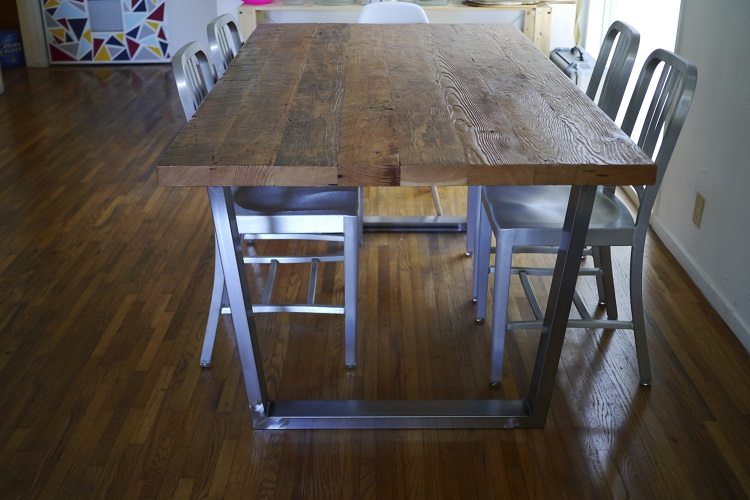
Pipes from an alloy that is not highly durable are used for the production of lightweight structures
One of the most important parameters of a deformable aluminum raw material is its nominal density. Numerical values for some types of similar materials are given in table No. 3.
Table 3
| Density, g / cm³ | Alloy | |
| GOST 4784 | AA, EN, ISO | |
| 2,81 | 7075 | |
| 2,78 | 1915 | 7005 |
| 2,7 | AD31 | 6063 |
| 2,7 | AD33 | 6061 |
| 2,66 | AMg4.5 | 5083 |
| 2,66 | AMg 4.0 | 5086 |
| 2,66 | AMg3.5 | 5184 |
| 2,68 | AMg 2.5 | 5052 |
| 2,69 | AMg1.5 | 5050 |
| 2,7 | AMg1 | 5005 |
| 2,73 | MM | 3005 |
| 2,72 | D12 | 3004 |
| 2,73 | AMC | 3003 |
| 2,76 | AK4-1h | 2618 |
| 2,75 | D18 | 2117 |
| 2,78 | D16 | 2024 |
| 2,79 | D1 | 2017 |
| 2,8 | AK8 | 2014 |
| 2,705 | AD0E | 1350 |
| 2,7 | AD1 | 1230 |
| 2,7 | HELL | 1200 |
| 2,705 | AD0 | 1050 |
Assortment
The entire range of aluminum profiles is specified in GOST 22233-2001, which is in force in our country. On the EU market, it is distinguished in accordance with the standards EN 12020-2 and EN 755-9. All of these regulatory documents state that a hollow aluminum profile, i.e. a pipe, may have:
- simple hollow profile;
- a complex profile in which there are two or more cavities;
- a profile with narrow or complex semi-enclosed cavities;
- wide or large hollow profile.
In conclusion, it should be noted that the joining of the aluminum profile is carried out in the following ways: mounting on a coupling, on a bolted connection and on welding. Moreover, neither the size of the section, nor the structural material affects the choice of method. It depends on the intended operating conditions of the structure.
